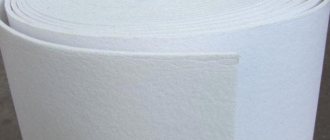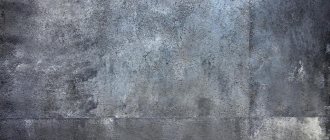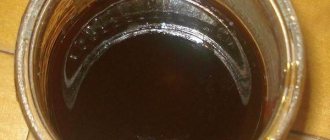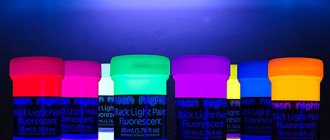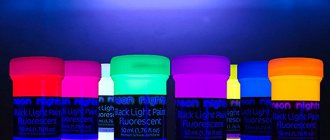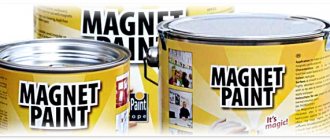Partial or complete impregnation of wood with drying oil has been known since the times of the Egyptian pyramids, however, treating wood with drying oil is still relevant today. Next, we will look in detail at what types of drying oils there are and for what purposes certain types are used, plus you will learn recipes for mixtures based on drying oils and get answers to 5 frequently asked questions on this topic.
Coating wood with drying oil is considered one of the effective and repeatedly proven ways to protect wood.
Natural drying oil - features and properties
Natural drying oil is boiled vegetable oil, which has long been used for wood processing. Of course, various additives are added to the composition of modern drugs, but their essence does not change. After boiling, the oil thickens and becomes darker. If you leave it in the open air, it dries to form a polymer film.
If you follow the definition given in GOST 32389-2013, drying oil is a film-forming substance obtained by processing vegetable oil with the introduction of drier to accelerate drying. Natural drying oil, according to the same document, is a film-forming substance consisting of drying oil and driers.
For natural drying oil there is a separate 9262 - GOST 7931-76, which states that it can consist of the following components:
- natural linseed oil;
- natural hemp oil;
- cobalt, manganese and lead siccatives.
Important! Drying oil is a preparation for wood, which consists of heat-treated linseed or hemp oil with the addition of special substances to speed up drying.
The share of natural oil is at least 97%, the rest is driers. Physical characteristics of drying oil:
Physical characteristics of drying oil
What properties of the substance are used in construction? Basically this is the ability to impregnate wood and fill microcapillaries and pores. Then, under the influence of the environment, the drying oil polymerizes, and the wood pores become locked. As a result, water cannot penetrate the structure of the material.
Attention! Drying oil prevents moisture from penetrating into the wood. In the absence of water, the material does not infect mold and bacteria, and as a result it does not rot or undergo biological corrosion. This is a good natural anti-corrosion treatment.
After processing, the wood acquires a golden hue, which highlights its pattern and texture. After 24 hours, no greasy or oil stains remain on the surface. Processing gives the material nobility and sophistication.
The main purpose and principle of operation of oil impregnation
Coating with drying oil is a painstaking process, but if you know its principle of operation and method of use, then such work can be done by anyone without special qualifications. Oily impregnation acts on wood as follows:
- After application, the composition begins to interact with the sun's rays and the consistency gradually thickens.
- If the product is applied in a thick layer, this will increase the drying time and the top layer will become crusty.
- The polymerization process is activated, which creates a protective film on the surface.
- The substance dries due to the presence of polyunsaturated acids and oils of vegetable origin.
- If the product is of high quality, then drying will take place at an accelerated rate.
To speed up the drying process, the oily impregnation can be slightly heated over a fire or a drier can be added. After drying, a protective film with high adhesion is created. Such treatment significantly reduces the consumption of the next coating. There are several types of drying oil and their production must comply with GOST.
Difficulties in choosing a drying agent for natural linseed oil
Drying agents should make up only 3% of the total composition of natural drying oil. This is so small, but it is very important in order to get a decent coating that dries quickly enough and lasts a long time. The quality and strength of the coating formed by linseed oil largely depends on how evenly it dries throughout the entire volume.
Many people are frightened by the fact that dangerous compounds can act as driers. In particular, those containing lead. It must be said that initially it was lead oxide that was designated as a catalyst for curing drying oil. It was chosen because its action extended both over the surface and throughout the entire depth of penetration of the coating. While, for example, cobalt stimulates surface hardening, zinc slows down surface hardening and accelerates it at depth, manganese gives a very dark tint, etc. It turned out that lead worked best.
However, now, with the advent of combined dryers, lead can be abandoned in many cases, and natural linseed oil is rightfully considered a 100% safe material.
In addition to the qualitative composition of the drier, its quantitative share is important. Because if there is too much catalyst, drying occurs quickly, which leads to unevenness. As a result, cracks and folds form, and the surface may again become sticky. Therefore, the hardening rate must be calculated extremely accurately - so that the surface has time to be sufficiently saturated with drying oil, and so that the polymerization process proceeds as evenly as possible.
The task was not easy, and few people can solve it at home. Because it is almost impossible to take into account all the subtleties in the calculations. To obtain a reliable result, you need a solid experimental base and qualified specialists. Therefore, despite the fact that the composition of natural flaxseed oil does not include many components, and the technology seems very simple at first glance, a composition produced by responsible production will always have an advantage over one made independently.
Technical characteristics and certificate of conformity
Petroleum-polymer drying oil differs significantly from synthetic and natural products. The latter is the most environmentally friendly product and is economical to apply. According to GOST, it must meet the following technical characteristics and ratios:
- Drying agent for oils 3:97%.
- Should not contain any obvious odor.
- Dry at temperatures above 20 degrees.
- The density of the product should not exceed 0.95 g/m. cube
- Acidity is not higher than 5 mg/KOH.
- The content of phosphorus elements is not more than 0.015%.
Reference! The characteristics of any substance must comply with GOST. This must be taken into account when purchasing products. Many unscrupulous manufacturers do not even have a certificate of conformity and sell low-quality products that can be hazardous to human health during use.
Drying oil consumption per 1m2
Drying oil consumption per square meter can be calculated using basic indicators:
- Type of material being processed.
- Composition of drying oil according to GOST.
- Number of layers.
Let's consider the approximate consumption of drying oil per 1 m2 if the wood is processed using a multi-layer or multi-layer method:
| View | 1 layer | 2-3 layers |
| Natural | 0,25 | 0,15 |
| Combined | 0,30 | 0,25 |
| Synthetic | 0,35 | 0,30 |
From the table we can conclude that re-dyeing will minimize consumption and natural appearance, despite its high cost, is much more economical than synthetic and combined substances. 1 liter of product is enough for an area of 20 square meters.
To keep the substance consumption to a minimum, you need to know a few subtleties:
- Before use, the surface must be thoroughly cleaned of various contaminants.
- It is recommended to sand the wood before processing. Roughness will require additional consumption of product to fill the unevenness.
- When purchasing, pay attention to the consistency of the substance. If it is very thick, then the layers will turn out thick, but if it is very liquid, then this will negatively affect the protection.
On a note! Large hardware stores have special stands that highlight the consumption of a particular product they sell.
Scope of application of natural drying oil
The use of natural drying oil is in one way or another connected with the processing of wood and the preparation of products for its finishing. It is used as an independent product, as a base for oil paint, for the preparation of putties and primers.
The scope of application of drying oil is very wide:
- Processing of wooden interior elements - floors, window frames, window sills, ceilings, baseboards, doors, etc.
- Priming surfaces before painting to increase adhesion and reduce paint consumption.
- Production of putties, thickly rubbed paints, pastes, putties and primers;
- Protection of wood from rotting, moisture and pests in the structure of boats and small vessels;
- Dilution of paints, primers, putties and other coatings;
- Antiseptic treatment of logs and beams during the construction of log houses and other similar structures.
- Repair of coatings and restoration of furniture;
- Finishing of parquets, floorboards and their care;
- Making bee hives.
What is the difference between drying oil and other antiseptics, which also prevent wood from rotting and molding? The difference is that drying oil keeps the wood dry, while other antiseptics are simply toxins for bacteria and fungi. That is, when treated with chemicals, the wood still gets wet, it’s just that now it’s poisoned from the point of view of parasites, and they don’t eat it.
When drying oil is used for painting before applying the base coat, it leads to such effects as improved adhesion of paint to the surface, uniform coloring, improved appearance of the coating and extension of its service life. This effect is used in the manufacture and restoration of furniture, lining, parquet and other similar coatings.
We can say that natural drying oil is used in the field of wood processing and the preparation of materials for finishing work. This is an absolutely safe natural material that has a light, pleasant scent of linseed oil. After application, it penetrates deep inside and fills all pores and capillaries, evenly painting the surface. As a result, the material becomes insensitive to moisture and the destructive factors of biological corrosion.
Comparison of characteristics of drying oils
Alkyd and oil drying oils are most often the basis for the manufacture of paints. Alkyd ones are cheaper, so unscrupulous manufacturers often use them. Natural oil drying oils are used for diluting paints; composite drying oils have not found widespread use in paint and varnish production due to the low-quality coating obtained.
The resistance of most drying oils to environmental influences is inferior to other surface treatment means, so the use of these materials for outdoor work is limited. Natural drying oil, the most expensive type of drying oil, is impractical to use for external work: the coating will need to be constantly updated, and this is very expensive. Also, natural drying oil should not be used as a pre-coat for painting; cheaper alkyd drying oils are suitable for this. Alkyd drying oils also resist weathering better.
For interior work, from the point of view of environmental friendliness and ease of application, natural oil varnish predominates - it does not have a strong odor and does not emit harmful substances. But due to the high cost of this material, alkyd drying oils or oxol are more often used. They have a characteristic odor, so the room should be well ventilated.
Composite drying oils are toxic, and not only during the drying period, the surface treated with such drying oil can emit an unpleasant odor and emit harmful substances for several years. Therefore, this type of drying oil is suitable only for outdoor work in non-residential premises.
When natural drying oil is the best choice
Like any other natural product, drying oil is not a cheap impregnation option for wood. There are antiseptics, synthetic drying oils, stains and other, cheaper impregnations. How to understand when it is better to use a natural product?
This requires knowledge of the basics of working with wood, however, we can say that natural drying oil is used in the manufacture of furniture and various wooden structures such as doors, frames, floors and so on. In other words, its use is justified in the case of interior items, furniture, and interior decoration.
This is a good option when you need to treat surfaces that will come into contact with people. If it is important to maintain safety and refrain from using potentially dangerous and allergenic chemicals. In the case of treating surfaces that will come into contact with food.
You can't do without this product in painting, fine art and decoration. On its basis, oil paints are prepared and diluted, putties, putties, and pastes are mixed. The smell of drying oil is the smell of carpentry workshops, furniture workshops and art studios.
Important! Drying oil can also be used outside. These can be logs, siding boards, various garden furniture, parts of gates and fences. Finishing with paints and varnishes, as well as pre-impregnation with an impregnant, is recommended here.
How to dilute drying oil?
When you just bought drying oil in the store, you never opened the jar, you just need to shake it thoroughly. This will allow the contents to be shaken. But there are times when drying oil has stood on the shelf for a long time. This is why it cannot be used immediately because it has hardened. It can harden if the seal of the package is broken.
To dilute it to the required state, it is recommended to add only natural solvents. These can be solvents for oil paints, as well as white spirit, turpentine, nefras, and other compounds. If the condition of the drying oil is very hardened, then you can fill it with a natural solvent overnight, after which, in the morning, stir everything thoroughly and start using it.
Natural drying oil for extreme circumstances
Many people know such a protective and decorative coating as a combination of linseed oil or linseed oil with wax. Natural, environmentally friendly, beautiful and noble. But not everyone knows that such a mixture also has strategic applications. This composition is used by travelers, fishermen and all those who need to work in damp conditions: construction or gardening work, picking forest fruits and mushrooms, working in the sea or on the river.
Historical documents repeatedly mention that since ancient times, clothes, shoes, bags, tents, etc., were waxed in inclement weather conditions, kept over a fire and received waterproof items, which helped to escape the cold. Also, tools or military weapons were rubbed and polished with wax so that they would not rust and would last longer.
The modern version of such a lubricant/impregnation is a more comfortable option, both in application and in operation. The base of the mixture consists either of linseed oil mixed with wax, or of drying oil, wax and turpentine mixed in equal proportions. The wax is grated on a coarse grater, melted, then drying oil is added, then turpentine can be added. If the composition is without turpentine, then you can even treat the skin - some people treat skin inflammation this way.
Enthusiasts also experiment with other additives, but drying oil and wax are present in all recipes. Natural linseed oil provides special softness and ease of use without compromising technical efficiency. The composition is easily applied to fabrics, then the product is treated with a hot hairdryer, which is much safer than holding it over a fire. It is very convenient that in modern conditions, fabric items treated with the mixture can be easily washed after a trip or work shift using a washing machine.
Surface treatment
Before applying drying oil, the wood must be cleaned and degreased with white spirit or acetone (25%). The massif must be dry; according to the rules, the maximum humidity is 16%.
White spirit will allow you to clean the surface of the solid wood from serious contaminants and prepare the wood for subsequent finishing.
Application and composition recipes
Drying oil is applied in the same way as any paint, that is, using a brush, roller or swab. To apply it with a spray gun, the composition must be diluted, but it is better for an amateur not to undertake such work.
| Illustrations | Recipes |
| Hot impregnation Typically used for impregnation of small parts with natural compounds. The product is placed in a container with drying oil and heated in a water bath for 4 - 8 hours, drying time after hot impregnation is 4 - 5 days.
| |
| Drying oil with kerosene The compositions are mixed in a 1:1 ratio. Can be soaked hot or cold. In a water bath, the product will be soaked in 3 hours, and in a cold solution in 2 days. The product dries in 2–3 days. | |
| Drying oil with paraffin and turpentine Take 5 parts drying oil, 1 part turpentine and 8 parts paraffin. Initially, mix turpentine with paraffin in a water bath, then add drying oil. The composition is applied warm and dries for up to 3 days. | |
| Drying oil with wax Take 20 parts of drying oil and 3 parts of wax. The drying oil is heated in a water bath, after which crushed wax is added to it. Apply warm or hot to wood and dry for up to 3 days. |
If you are interested in impregnating wood with oil and wax, then all the recipes are “HERE”
Drying
The drying time of drying oil depends on the type of composition itself, air humidity and temperature. So the optimal temperature for drying wood is 20 – 30ºС, with a relative humidity of up to 70%.
Compositions with polymetallic drier dry best; for example, drying oil with the addition of lead drier dries in 20 hours, while manganese drier reduces the process to 12 hours. And if you mix both of these driers, the composition will dry in 8 hours.
It is advisable to dry the wood indoors without drafts. There is no point in deliberately increasing the temperature using heaters or installing fans, as the coating may crack.
It is better to dry wood indoors at a temperature of 25 - 30ºС
Manufacturers of drying oils for wood impregnation
Like other building materials, drying oil comes in two main price categories: imported and domestic. If in other cases this choice is quite contradictory and causes controversy, here everything is more or less clear.
The fact is that drying oil consists of 97% natural oil. Flaxseed, hemp, rapeseed, sunflower - it doesn’t matter, the main thing is that natural oil produced from flax seeds in the vicinity of Liverpool and a similar product obtained in a remote African village are no different from each other.
Of course, the quality and composition of the driers plays a role, as does the quality of heat treatment and oxidation, but they have virtually no effect on the final cost. If we compare not such polar examples, but, say, Europe and the Russian Federation, then the actual consumer value of drying oil produced here will be absolutely no lower than any analogue from Germany, Great Britain or Finland.
Russian manufacturers produce a large amount of drying oil, including natural one. An excellent example is GOODHIM linseed oil, which contains modern lead-free drying agents. The product is easy to apply and protects the material well from moisture, cracking and pests. Drying oil is prepared in accordance with GOST of the Russian Federation and European quality standards.
Drying oil from sunflower oil
A composition made from sunflower oil will protect the surface just as reliably as one made from linseed oil. The only difference is that the color of the product will be lighter, which can be used, for example, for the design of a room.
You can prepare drying oil in two ways - hot and cold. Hot cooking allows you to obtain particularly durable coatings on the surface being treated.
Whatever method of preparing the composition is chosen, the oil still needs to be processed thermally. When making drying oil, it is necessary to remove water from the composition, as well as oxidize all kinds of impurities.
Instructions for heat treatment of sunflower oil:
- Pour oil into a metal container. The oil should fill the dishes no more than 50-60%. Place the container on low heat.
- After the oil reaches a temperature of 110 degrees, abundant foaming and evaporation of water begins.
- Increase the temperature to 170 degrees and keep the oil on the fire for another 3-5 hours.
- After the water has completely evaporated, raise the temperature to 250-280 degrees. At this point, darkish flakes will begin to separate from the oil.
- Let the oil cool at room temperature, and then strain it through cheesecloth. The process of preparing the base for drying oil is complete.
Tip #1: You can determine whether the oil has heated to a temperature of 250-280 degrees using a goose feather. If the edges of the feather curl or deform, it means that the desired temperature has been reached.
Tip #2: to reduce foaming, it is recommended to add a little prepared drying oil at room temperature to a metal container.
Recipe for preparing the mixture using the cold method:
- Heat the prepared base to 120-150 degrees. In this case, the base must be constantly stirred.
- As soon as the desired temperature is reached, add a drier - its share in the oil solution should be 5-8%. For greater safety, it is recommended to first mix the drier with the same amount of oil, and only then add the mixture to the base. If, nevertheless, the foam is released very intensively, we reduce the rate of addition of the drier and vigorously mix the mass.
- After combining all the components, remove the container from the heat and cool the drying oil at room temperature.
Recipe for preparing the composition using the hot method:
- Heat the base to 170 degrees and add a drier at the rate of 1.5-2.5% of the volume of the base.
- Before adding the drier, mix it with dehydrated sunflower oil in equal quantities.
- As soon as foaming has decreased, we begin to increase the heating temperature to 280 degrees. At the same time, regularly stir the composition throughout the entire cooking process (about 4 hours).
Where to buy drying oil and how to choose the right natural impregnation
To buy a good drying oil, you need to know some important points when choosing. To begin with, it must be said that it is best to use linseed or hemp drying oil; sunflower oil is poorly suited for protection from moisture and is washed out faster.
Before choosing a particular brand, take an interest in the composition of a particular drug and read reviews about it. Prepare before going to the store and choose several suitable brands. These can be popular companies with good reviews, reasonable prices and a modern composition of products.
If you don’t know where to buy, then here’s an example: goodhimTM. This is a Russian manufacturing company that produces a wide range of construction chemicals. European quality, local price and an absolutely natural product with harmless dryers.
When choosing drying oil, pay attention to the following points:
- Smell is the first thing that distinguishes a natural product from synthetics;
- Synthetic and solvent-diluted drying oils are always lighter, while natural ones have a dark brownish tint;
- If you want to get a product with a standard composition, look for the mention of GOST on the label;
- Be sure to read the composition, it should not contain anything other than oil and drier;
- Make sure there is no sediment, impurities, particles or other debris.
When purchasing natural drying oil, you must make sure that what you have in front of you is an oily, thick substance of a dark brown color with a faint smell of linseed oil, without impurities or inclusions. The composition contains driers and oxidized oil. Compliance with GOST 32389-2013 is desirable.
Selection tips and answers to 5 common questions
- When choosing, pay attention to the label; natural and semi-natural compositions are classified according to GOST, and synthetics are produced according to TU (technical conditions). Plus, drying oil must have a hygienic certificate;
- The quality is indicated by the uniformity of the composition; there should be no sediment at the bottom;
- As already mentioned, drying oil can be of different colors, but the composition should be relatively transparent.
| Question | Answer |
| Question No. 1 How long does it take for drying oil to dry on wood? | Depends on the type of composition. Semi-natural and combined compositions dry in 8-12 hours. Natural ones last up to 24 hours, and the drying time of sunflower drying oil can take up to 36 hours. |
| Question No. 2 Do I need to dry wood before painting? | Depends on what kind of paint will be applied. · For oil paints, treatment with drying oil is considered a mandatory procedure; · It is advisable to apply drying oil under alkyd compositions; · When working with other compositions, you need to look at the characteristics and instructions, because not every drying oil paint will work on wood, for example, nitro enamels have a risk of peeling. |
| Question No. 3 How to wash drying oil off wood? | If you know that before painting the wood was soaked in drying oil, then before removing the drying oil from the tree you need to remove the paint itself, and then wash off the drying oil. In general, drying oil is washed off from wood with white spirit or acetone (25%). Take a swab, wet it and clean the wood in 2–3 passes. |
| Question No. 4 Drying oil does not dry on wood. | The issue here is the quality of the composition. Cheap counterfeits are made from the so-called fuzz - this is waste oil. Drying oil from fuz is dark, thick and not transparent; after such treatment, neither the drying oil nor the paint with which you try to cover it will dry out. |
| Question No. 5 Are there light, almost colorless drying oils? | Light, liquid and almost colorless compositions are made on the basis of osprey (petrochemical waste). This drying oil takes 2–3 days to dry, but subsequently the top layer peels off. There are times when light-colored compositions do not dry at all. |
Application rules
In order for the use of drying oil to bring maximum benefit, it is recommended to follow the rules for its application. They are quite simple and require painting tools such as a brush, paint pan, and sandpaper. Next follow the instructions:
- The wooden part must be dried. Then it should be cleaned of dust and dirt, old finishes. Sand the surface with sandpaper P 120-180.
- Mix the drying oil and carefully apply it with a brush to the entire surface, ensuring a consumption of about 100 g/m2.
- Allow to dry outdoors in the shade, away from wind, for 24 hours.
- After the first layer has dried, you can reapply.
- The temperature during drying should be about +20 degrees.
Important! Do not try to speed up drying by using heaters, heat guns, hair dryers or fans. The best conditions for this are shade, coolness and calm. This way you will get maximum protection and a truly noble shade.
If additional protection is required, say for use outside or in wet conditions, then it is advisable to pre-treat the part with an antiseptic. A good choice is IMPREGNANT GOODHIM 230. After treating with an antiseptic, you should wait until the part has completely dried before applying drying oil.
In conclusion, let’s say that natural drying oil is a time-tested means for treating wood against moisture, rot and pests. It is completely safe and combines a number of unique features that make it indispensable in the protective and decorative processing of wooden products. This is the best product for furniture and interior details.
Criterias of choice
For exterior work, you can use synthetic drying oil, for interior use only natural
. First you need to decide on the type of drying oil used : for interior work, household items, products with increased environmental requirements, a natural product is suitable, and for facade primers and paints, you can also use options containing solvent .
The compositions of Russian manufacturers must be marked with GOST, and the list of components must not contradict it. If ingredients that are not typical for the desired class of product are indicated, you should not purchase drying oil.
The composition should have a color characteristic of the oil used and a uniform consistency. It should be opaque, free of sediment and any foreign inclusions. Natural products have a pleasant oily smell, but oxol smells like a solvent.
Advantages and disadvantages
Natural drying oil remains a popular product due to a number of advantages. They are represented by the following points.
- The impregnation is non-toxic and therefore suitable for interior work in residential buildings and office premises.
- There is no unpleasant odor.
- It is highly environmentally friendly compared to analogues of synthetic origin.
- Maintains the quality characteristics of base products.
- Allows significant savings on other consumable mixtures.
However, there are some disadvantages that limit the use of the mixture.
- Impregnations and oil paints based on natural drying oil harden more slowly than synthetic solutions.
- It is not recommended to apply it to building facades, given the sensitivity of drying oil to changes in atmospheric parameters.
- Mainly suitable for processing wood and metal materials and not for other surfaces.
- Not all types of natural oils dry well; some remain viscous.
